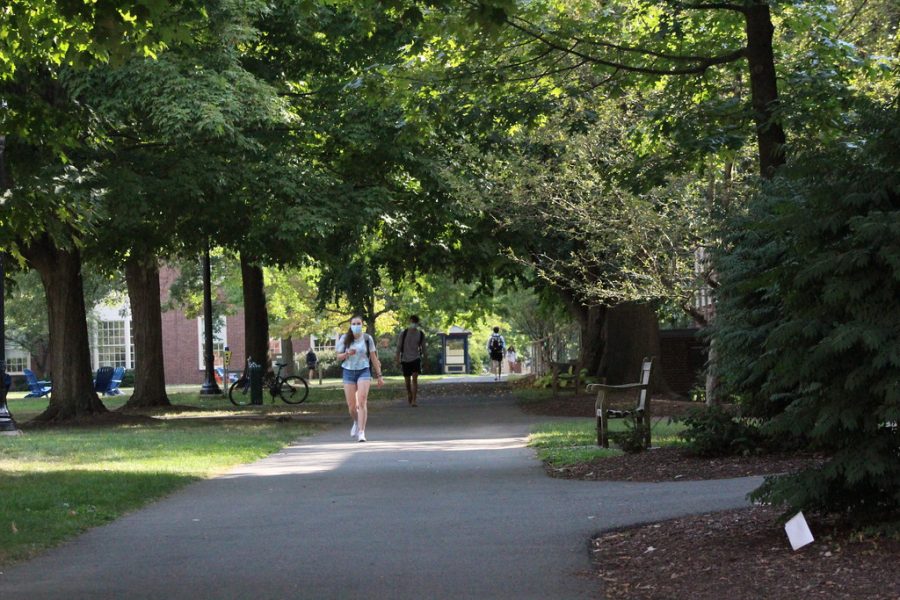University grapples with campus opening amidst COVID-19
August 27, 2020
On Aug. 12, the University, along with many other colleges and universities across the nation, began welcoming students and faculty back to campus after an abrupt switch to online learning due to the COVID-19 pandemic.
“COVID-19 is a very real and present challenge. Your negative tests do nothing to prevent future infection. Everything now depends on each of us. Everything,” University President John Bravman said in an Aug. 17 email addressed to the campus community.
In order to have the safest semester possible, the University has created and enforced regulations that students must follow on campus, such as wearing face masks, maintaining social distancing, maintaining good hand hygiene, promptly reporting symptoms, and isolating if necessary. Recently, the University reported seven positive cases of COVID-19 on campus, later providing a more detailed version of the expectations of students and employees should they receive a positive result or be exposed to COVID-19. These expectations can be found alongside the statistics on the University’s COVID-19 dashboard.
Attending in-person classes during a pandemic naturally requires adjustments to be made by the entire campus community. First-year orientation was strikingly different, with all students needing to schedule an appointment before checking into campus.
Lectures, too, have been entirely upended by the exigencies of COVID-19. “We are meeting in Trout Auditorium and I have to stand on the stage so the camera can see me for the Zoom recordings. This means I can’t wander around the room, ask questions, and have a more casual conversation with my students. It is also much harder to hear them when they ask a question,” Associate Professor of Biology Marie Pizzorno said.
For many professors, managing intricate, unfamiliar technology while trying to run a class has been a great challenge. Professors have had to continuously accommodate their classes in order to meet the needs of their remote and on-campus students. To protect the health of others, many classes have implemented classroom spacing guidelines, reducing the capacity of classrooms, in addition to following sanitation protocol. Despite all the University’s precautions, some students are still concerned about being on campus.
“I’m always nervous walking around campus because you never know who could have it,” Hasan Spencer ’24 said.
Spencer, a first-year student, tries his best to maintain proper distancing by limiting his interactions to people in his hall, while still wearing a mask when socializing. While some students continue to do their part, some tend to downplay the risks COVID-19 poses to the student body.
“It is not really a challenge for us because we are actually trying to follow social distancing guidelines. I know there are some people that are still going out to party and stuff over the weekend. And so it’s super frustrating, it’s like all of us want to be here. But people aren’t taking it seriously,” Bernadette Maramis ’24 said.
This isn’t the only problem that students face. The University’s recent meal plan change has caused frustration across campus, even before students arrived on campus. Using their swipes, students must eat takeout meals for breakfast, lunch and dinner, a system that was put into place to avoid contamination. However, many students have expressed negative feelings toward the quality of the food.
“I haven’t heard of a student that liked the food, it has been giving people a lot of problems — stomach issues. I’ve stopped eating meat since I got to campus,” Spencer said.
Many of the students don’t use their swipes but instead spend their money on food outside of campus, using delivery services like DoorDash or eating at local restaurants.
“It is just so frustrating. We are paying so much money and the quality that we are getting isn’t even half of what we are paying for,” Maramis said. “If you asked me in the beginning of the year how I thought my college experience would be like, I never would have assumed that it would be like this.”





















